Post Summary: All The Best Photo Spots In Banff and Exactly Where To Find Them
Let’s face it. You’ve seen Banff National Park all over the internet, and you’re dying to see those turquoise lakes and shimmering mountains for yourself!
We don’t blame you – that’s exactly why we came to see Banff in the first place too! There are so many opportunities here for budding photographers and amateurs alike to snap gorgeous pictures.
With amazing photo spots in Banff that look great on a phone AND a DSLR camera, you can’t go wrong when visiting this iconic Canadian Rockies park.
In this post, we’re sharing the exact spots for amazing pictures in Banff and some suggestions for the best times to visit each location. We’re also sharing our camera set up, camera settings, and gear recommendations for getting the most out of your time in Banff!
Let’s get shooting!
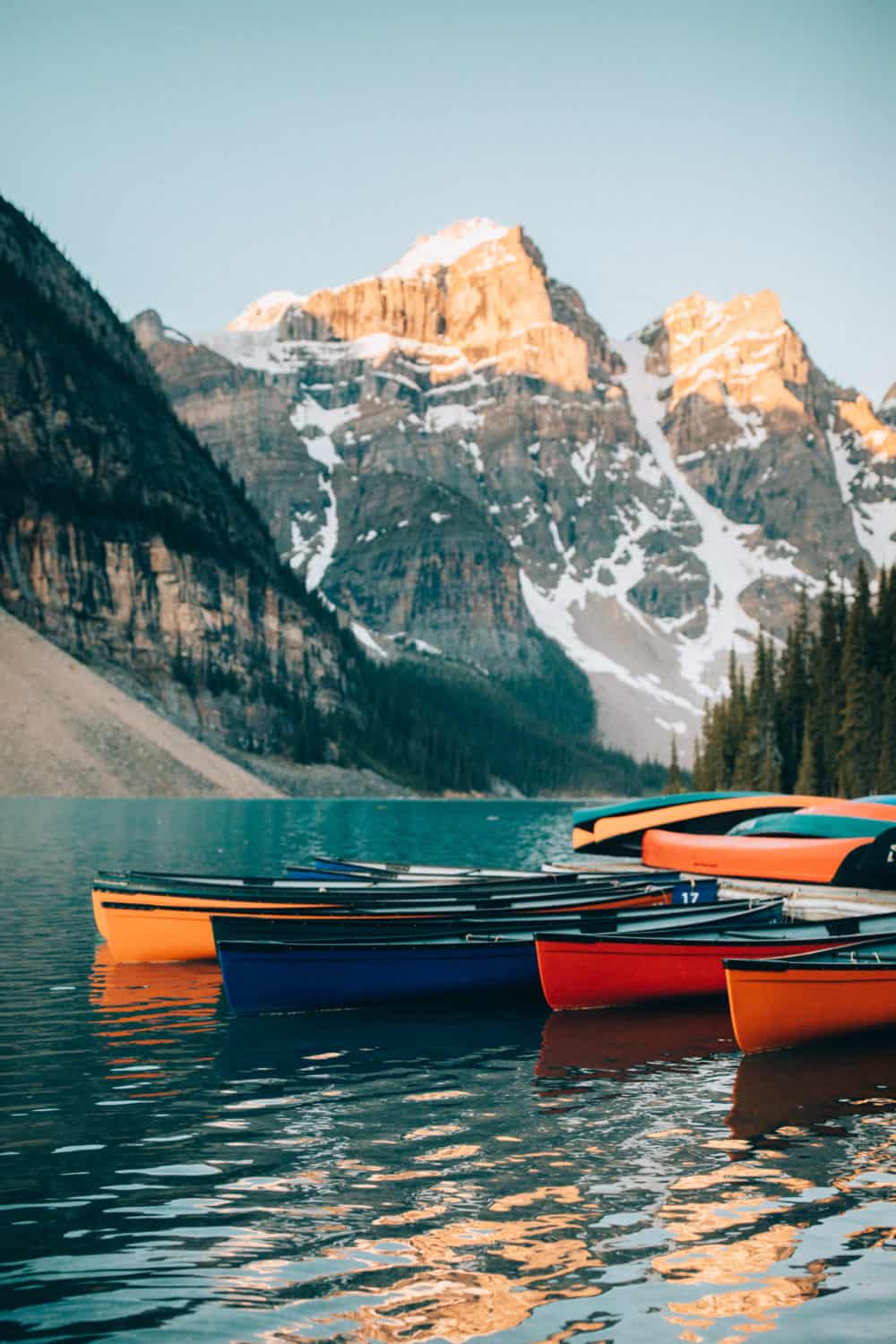
Before We Begin: What Is The Best Time To Visit Banff?
While all times of year provide unique and beautiful things to see and do in Banff, many people visit between June and early September.
Because the Canadian Rockies are located in a high elevation, the winters can be long and snow can stay for a while, making winter travel doable, just a lot more challenging.
Therefore, we recommend visiting Banff National Park in the summer months for access to most locations!
These months will provide you with access to nearly all Banff attractions and the driest weather conditions. The summer also give you the opportunity to photograph longer in the day (the sun doesn’t set until nearly 10:00 pm in the summer!) and the ability to take day hikes and backcountry trips with ease.

But The Winter Provides Unique Banff Photography Opportunities…
Banff in the winter provides an entirely different experience in the Canadian Rockies. If you are looking for a more quiet vacation to Banff, and access to snow-covered locations, we’ve got you covered. Click here to discover all the possibilities of winter activities in Banff.

So without further ado…
The Top Instagram-Worthy Photo Spots In Banff National Park
This post is in collaboration with Alaska Airlines and Banff-Lake Louise Tourism – all photos, writing, and opinions are completely ours!
Have photography gear questions? Here is our complete photography gear list we take with us while traveling, and the photography accessories we recommend. Included in each Banff photo spot, we’re also sharing gear suggestions, best times to visit, and secret tips!
EEOR (East End Of Rundle Hike)
An epic hike means that epic views will follow, right? In this case, it’s a resounding YES!
The East End of Rundle is a challenging hike with lots of elevation gain in a relatively short amount of time. That being said, as you climb higher and higher, you will experience a panoramic view of the Bow Valley, Ha Ling Peak, and man-made reservoirs below.
The hike is well-marked with blue trail markers and changes scenery and landscape often.
We hiked this trail during sunset (make sure to bring headlamps if you choose to do this too!) and were ecstatic when the sun rays lit up the surrounding mountains.
If you’re looking for opportunities for wide landscape shots, amazing sunrises/sunsets, or just want a challenging hike, the EEOR trail is a must!
How To Get Here: Drive for just 10 minutes south of the town of Canmore, Alberta on Highway 742 to reach a man-made reservoir called Whitemans Pond. Park at the Goat Creek Parking lot and look for the rock pile that spells EEOR to enter.
Fun Fact: You can also access the Ha Ling Peak Trailhead from the same parking lot.
Read More: Our Guide To Hiking The East End of Rundle
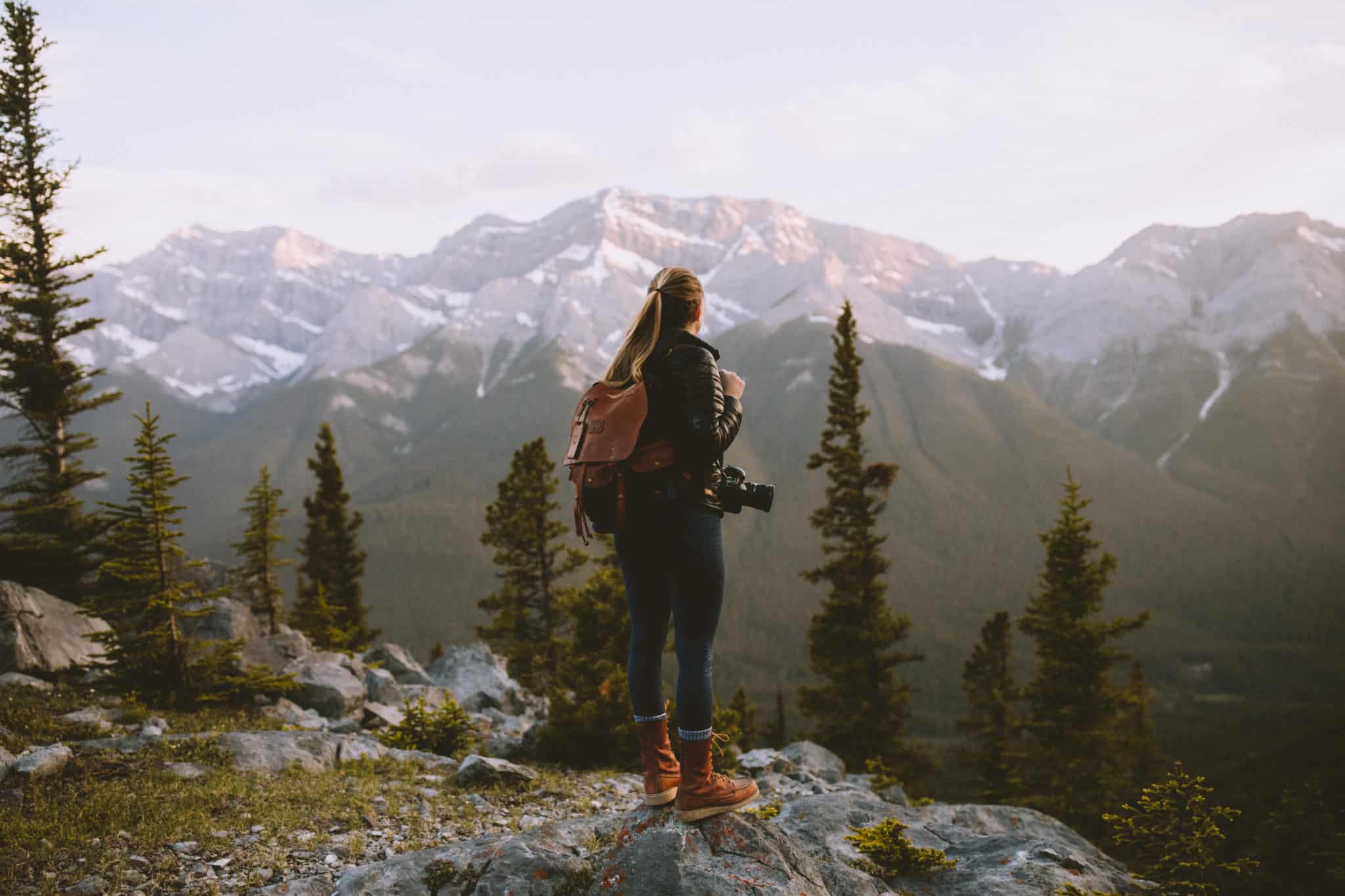

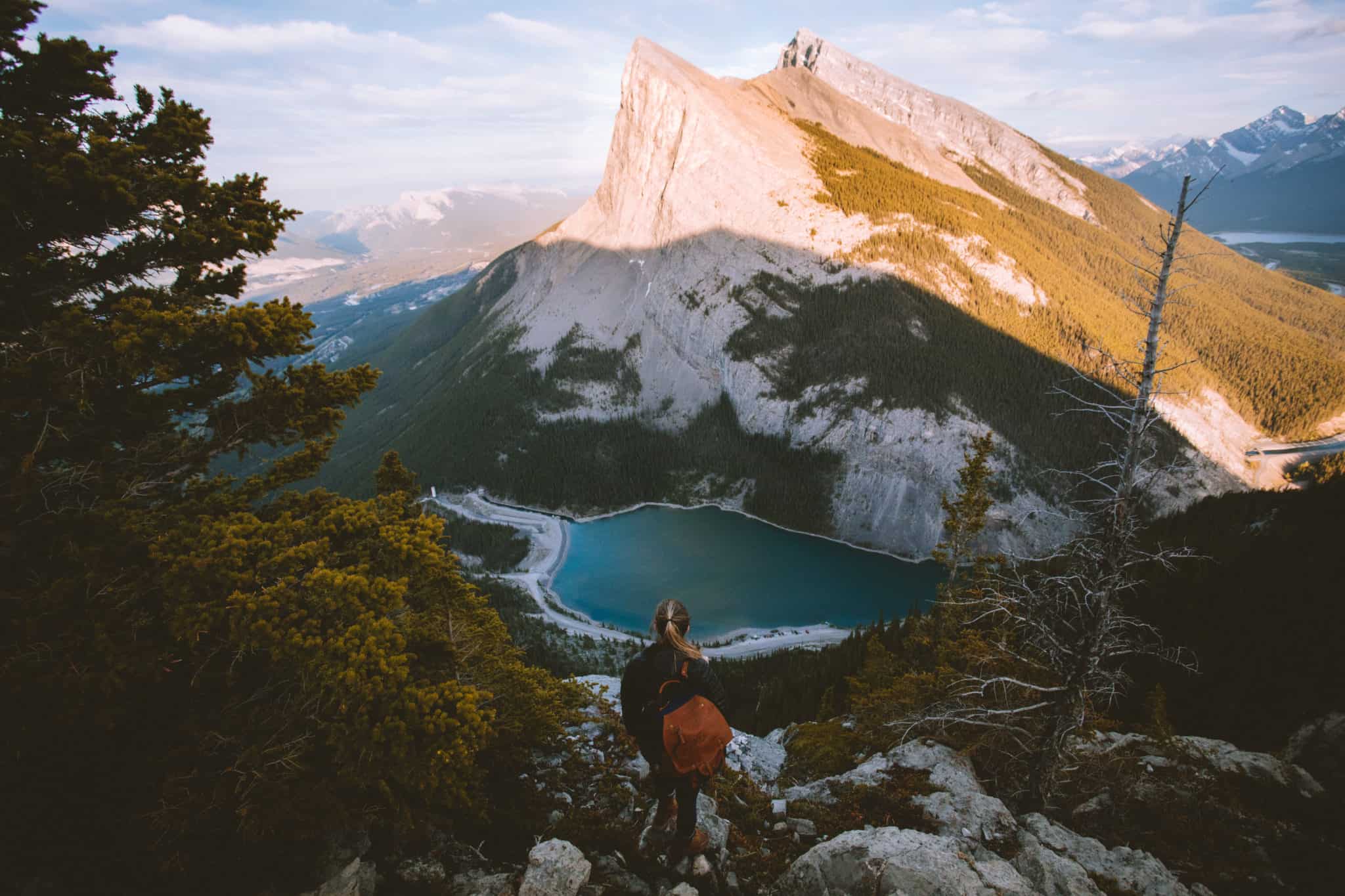
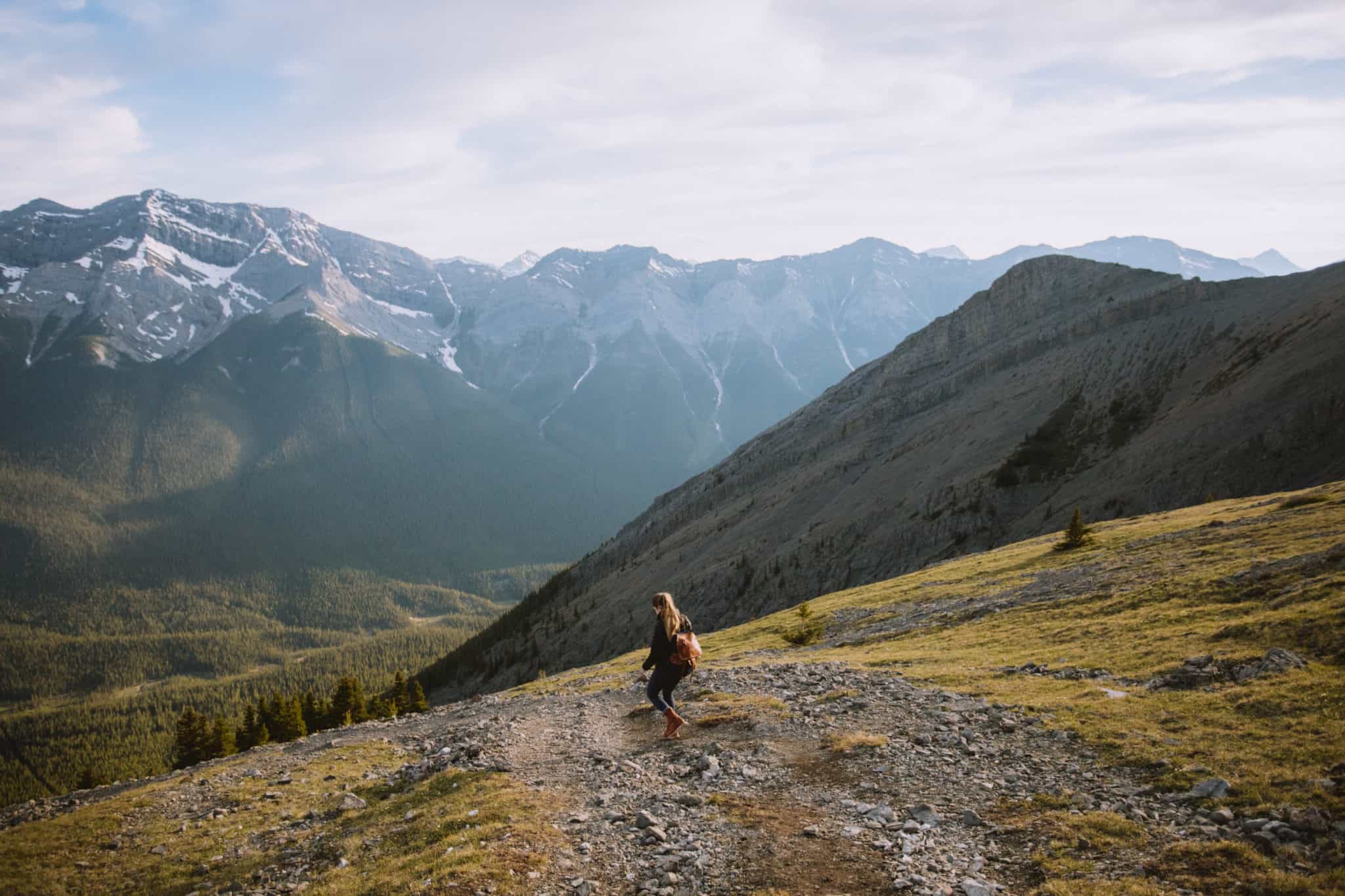
Moraine Lake
This picturesque lake is an essential stop on any trip to Banff. Located just a short drive away from the ever-famous Lake Louise (more to say about this place next!), Moraine Lake is an accessible and beautiful photo spot in Banff National Park.
Arrive early before the sun rises and climb the Rock Pile Trail to grab a spot to capture the first light on the mountains. During this time, the Valley of the Ten Peaks shine a brilliant pink/orange and cast a magical reflection on the water.
Moraine Lake is beautiful at any perspective, but if you want a more unique approach, try taking a hike nearby, renting a canoe, or coming in the off-season to see the leaves changing colors, or even to see it frozen!
How To Get Here: Take the Lake Louise Exit off of Highway 1. Drive towards the lake for 3 kilometers (about 1.5 miles) and look for signs to turn left for Moraine Lake. Follow the road for 11 kilometers (a little under 7 miles) to reach the parking lot.
Read More: Travel Photography: 8 Easy Practices To Enhance Your Images




Lake Louise
Lake Louise is among the most popular photo spots in Banff National Park.
Visitors come to see the glacial blues and greens of the water and maybe even take a boat ride on the lake! Its accessibility and beauty attract nearly 15,000 people A DAY during the busy season.
Lake Louise pictures are a popular park souvenir and can be seen on the backs of postcards, mugs, and so much more.
If you are looking to visit Lake Louise, we suggest coming before 8:00 am or after 7:00 pm to avoid most of the daily crowd. The parking lot fills up quick!
If you’re looking to avoid the crowds, consider viewing it from a higher elevation on your way to the Lake Agnes Tea House.
How To Get Here: Take the Lake Louise Exit from Highway 1 in Banff National Park. Follow signs straight ahead to the main and overflow parking lots.
Read More: 20 Adventurous Things To Do In Banff National Park
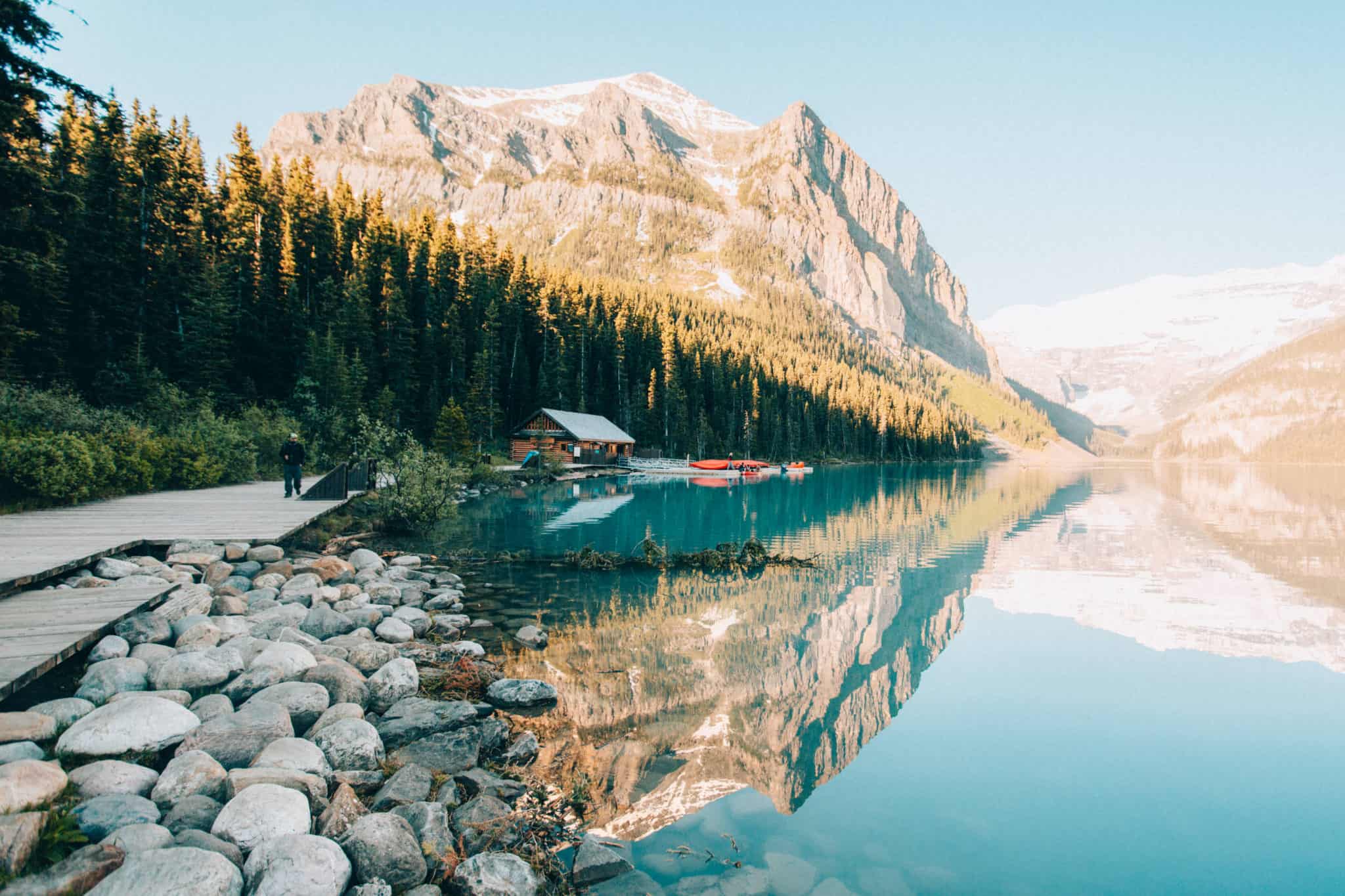
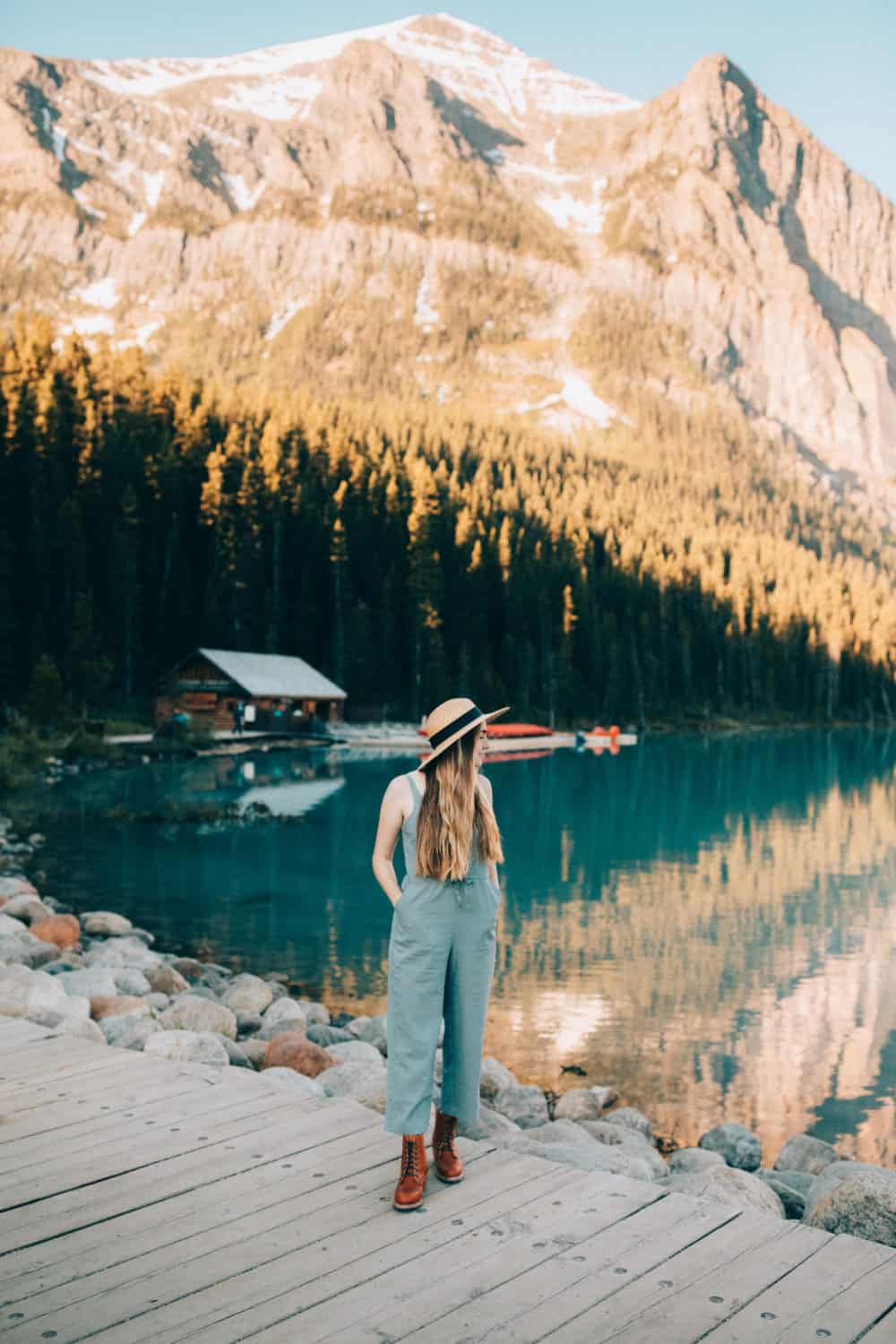
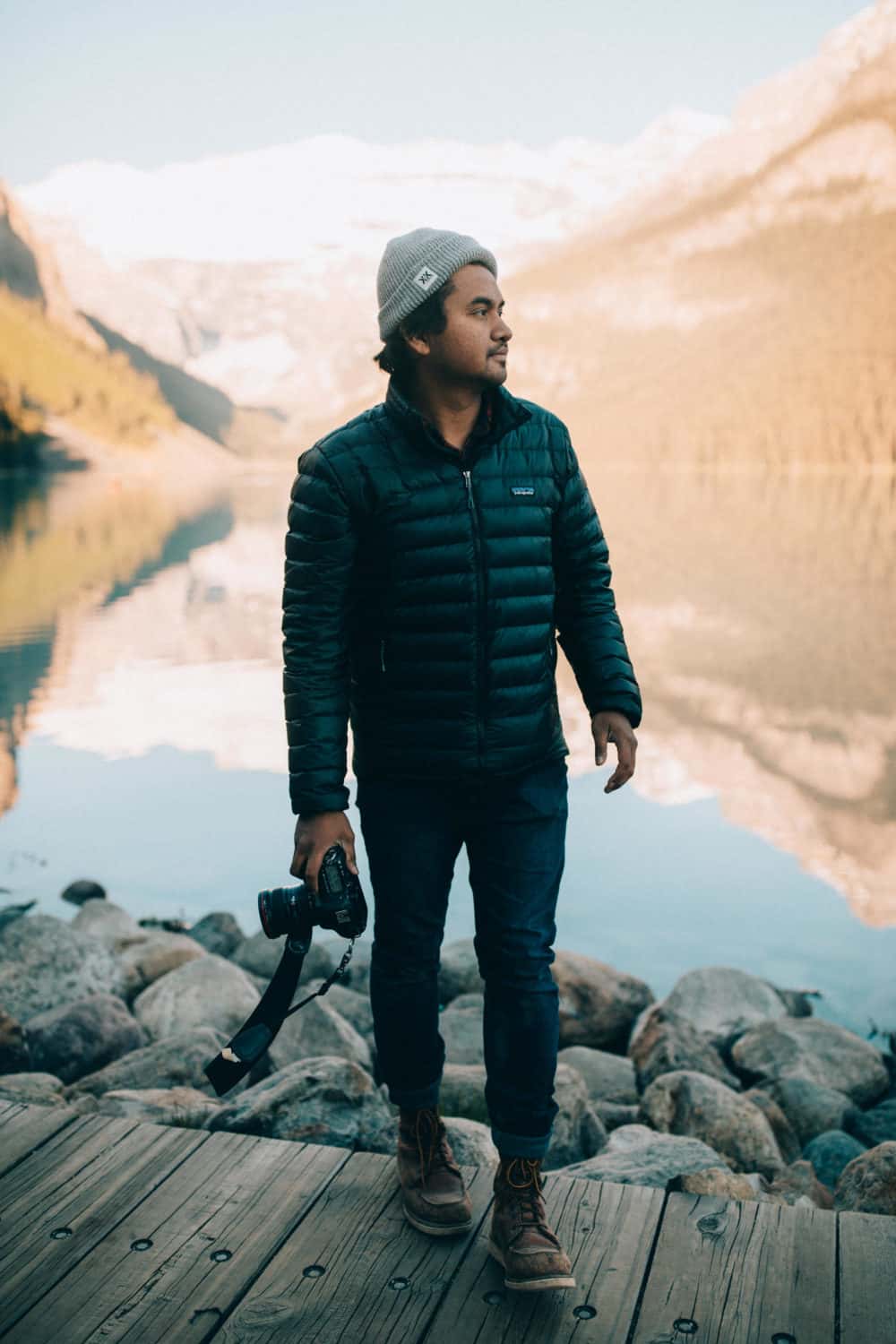
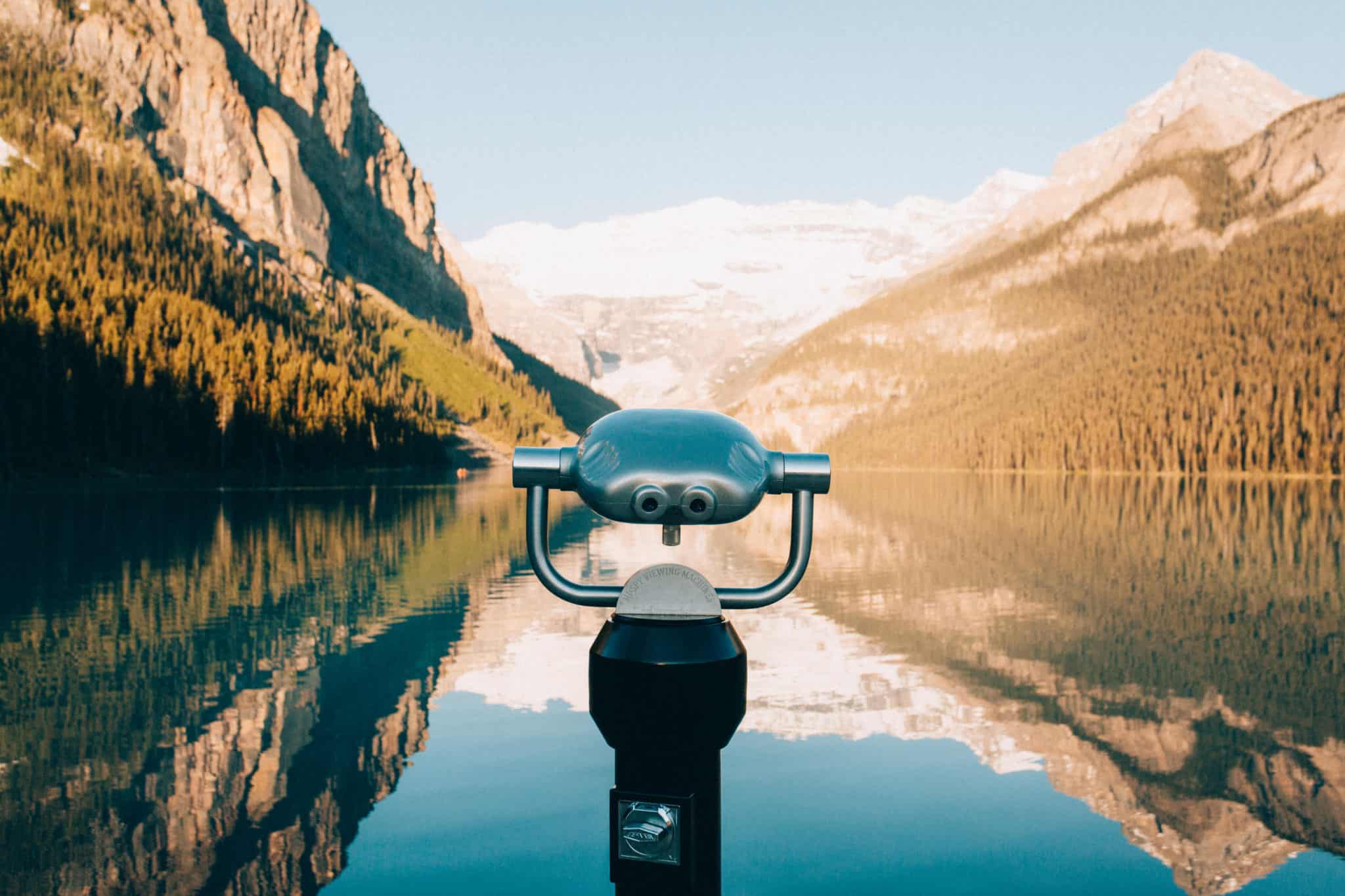
Johnston Canyon + Cave*
Johnston Canyon is an easy 5 km hike that brings visitors to see majestic waterfalls and numerous catwalks above the raging river. You can see the gorgeous falls in the summertime, and ever return for a completely different experience with a Johnston Canyon ice tour!
The first 1.1 kilometers will bring you to the Lower Falls and 1.5 kilometers further will bring you to Upper Falls. This trail is one of the most popular hikes in Banff, and for good reason!
On a hot summer day, this trail is tucked away in the canyon, which makes it a cool, family-friendly activity in the park.
*The Johnston Canyon Cave is currently closed to summer visitors. This is because the rare Black Swift birds nest there, and visitors deter the bird population from growing. Return to Johnston Canyon in the winter for an ice climbing tour to potentially visit this spot legally! (Please do proper research before visiting – we don’t ensorse illegal entry.)
From here, you’ll arrive inside a large tunnel, with a view of a smaller waterfall and a huge picturesque rock that is ever-popular on Instagram!
How To Get Here: Drive on Highway 1A (The Bow Valley Parkway) 30 minutes north of Banff. Park across the street at Johnston Canyon Campground and take the tunnel under the highway to reach the trailhead.
Read More: Best Places For An Instagram In Washington State

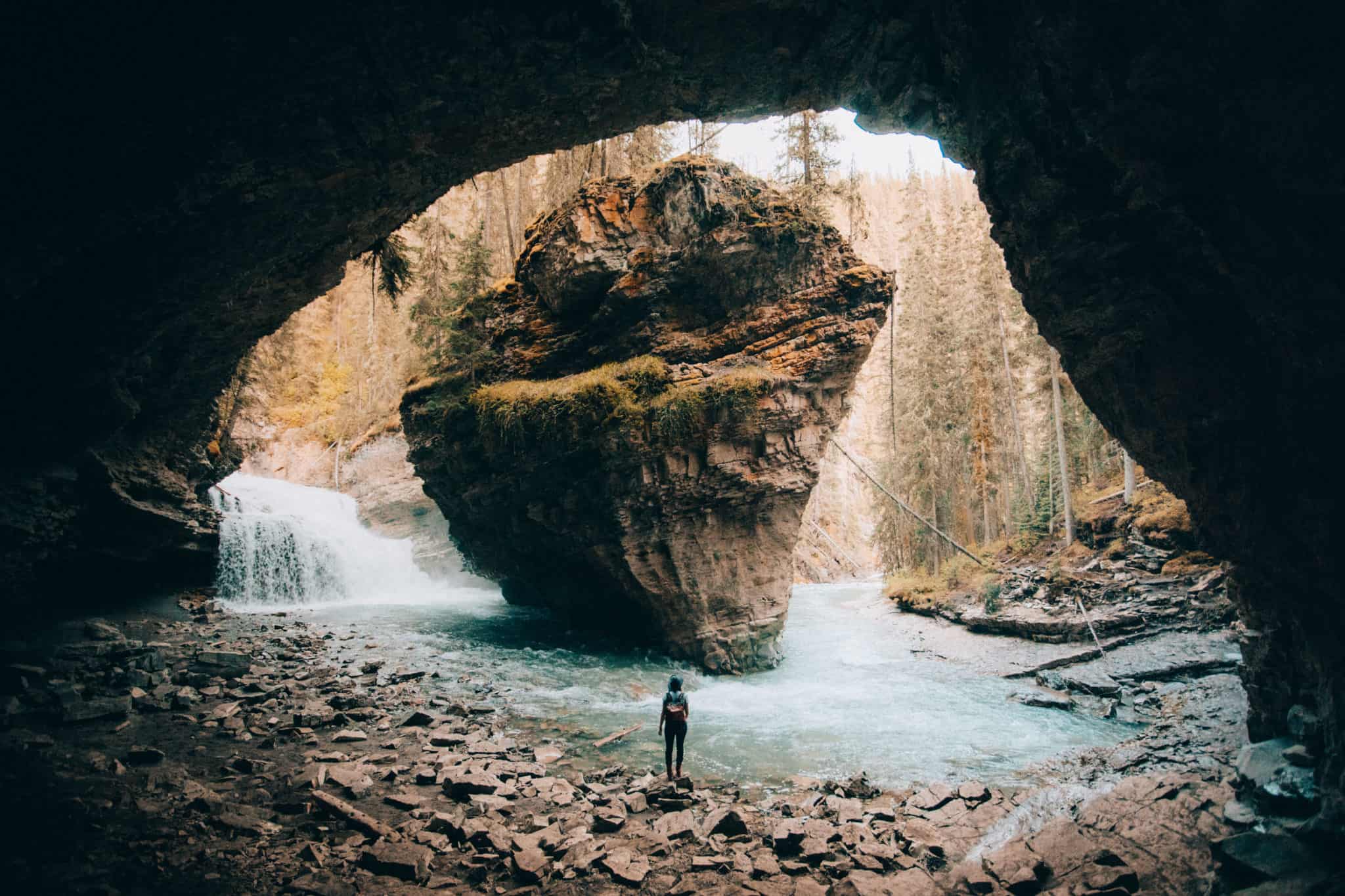

Bow Lake
Bow Lake is one of many beautiful stops along the Icefields Parkway. This is one of the largest lakes in Banff National Park, and is completely fed by glacial runoff.
If you’re heading north to Jasper National Park, this is a great stop to take for a lunch break or even a short stroll along their many shoreline trails. On a calm morning, you are able to capture the reflection of Crowfoot Mountain behind the lake.
You can also take pictures of the beautiful Num-Ti-Jah Lodge, the wooden bridge that overlooks the lake, and the beautiful wildflowers that surround the lake in the summertime.
How To Get Here: Drive 40 minutes north of Lake Louise on Highway 93 (Icefields Parkway). Look for signs to Bow Lake on the left.
Read More: How To Wake Up For Sunrise (For People Who Hate Mornings)

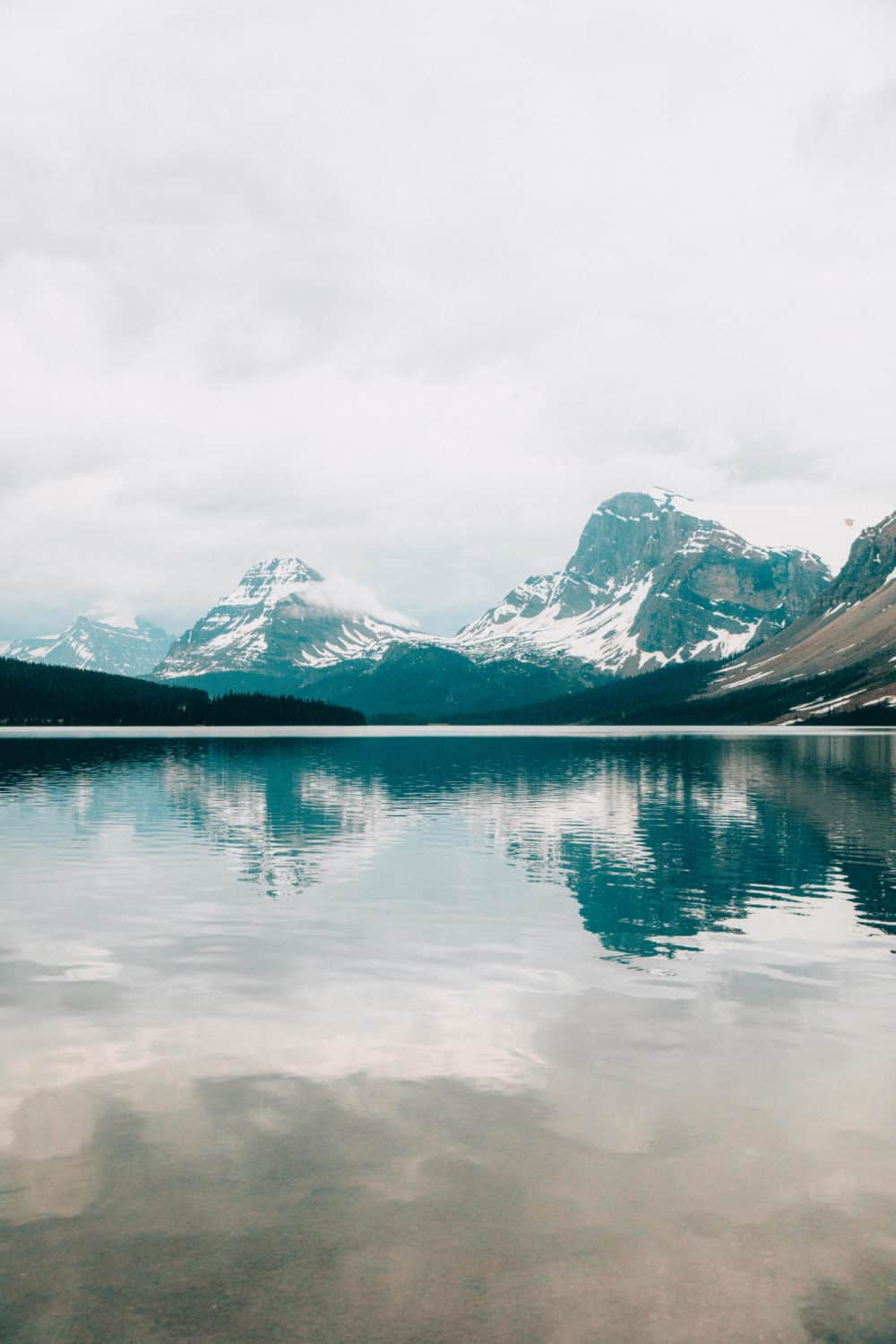

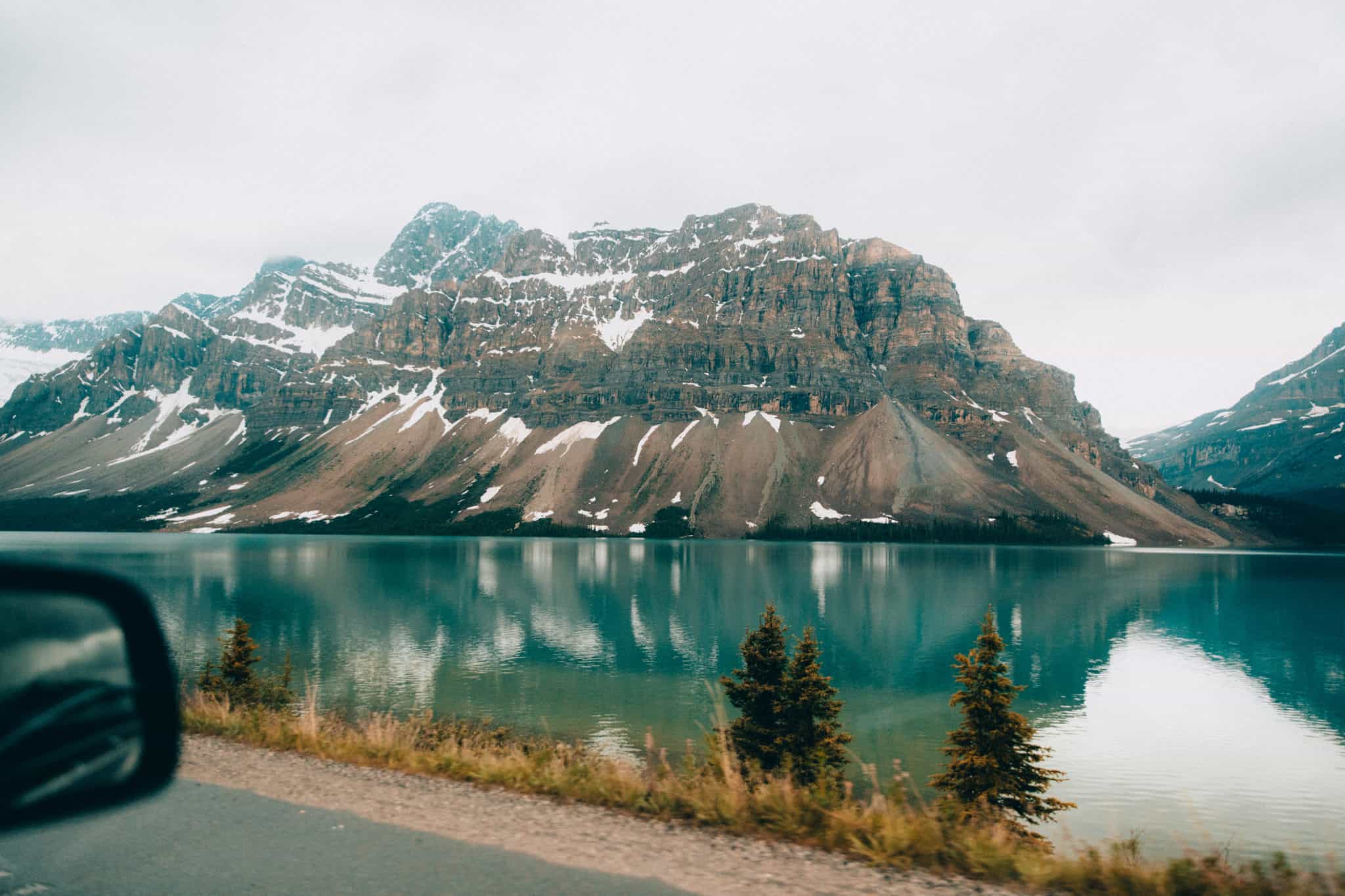

Peyto Lake
Just next to Bow Lake is the magical, glacial blue Peyto Lake.
This is an incredible stop to capture the famous lake colors as well as enjoy the hiking trails around the area. The stunning turquoise color of the lake can be credited to the rock flour that flows into the lake and shines a brilliant blue in the sunlight.
On a clear day (which is NOT pictured below) you can get a spectacular view of Cauldron Peak and Peyto Peak which, combined with the lake, are among the most popular photo spots in Banff National Park.
One of the most popular places to take a photo is right off the boardwalks on the boulders that line the edge of the hill.
Note: This place is commonly known for unpredictable weather, so always come with a backup plan. Read our post about our travel photography tricks to see how we deal with unexpected weather!
How To Get Here: Just a 5-minute drive north from Bow Lake is Peyto Lake on Highway 93/Icefields Parkway. Take a quick drive up to Bow Summit to park at either trailhead for views of the lake.

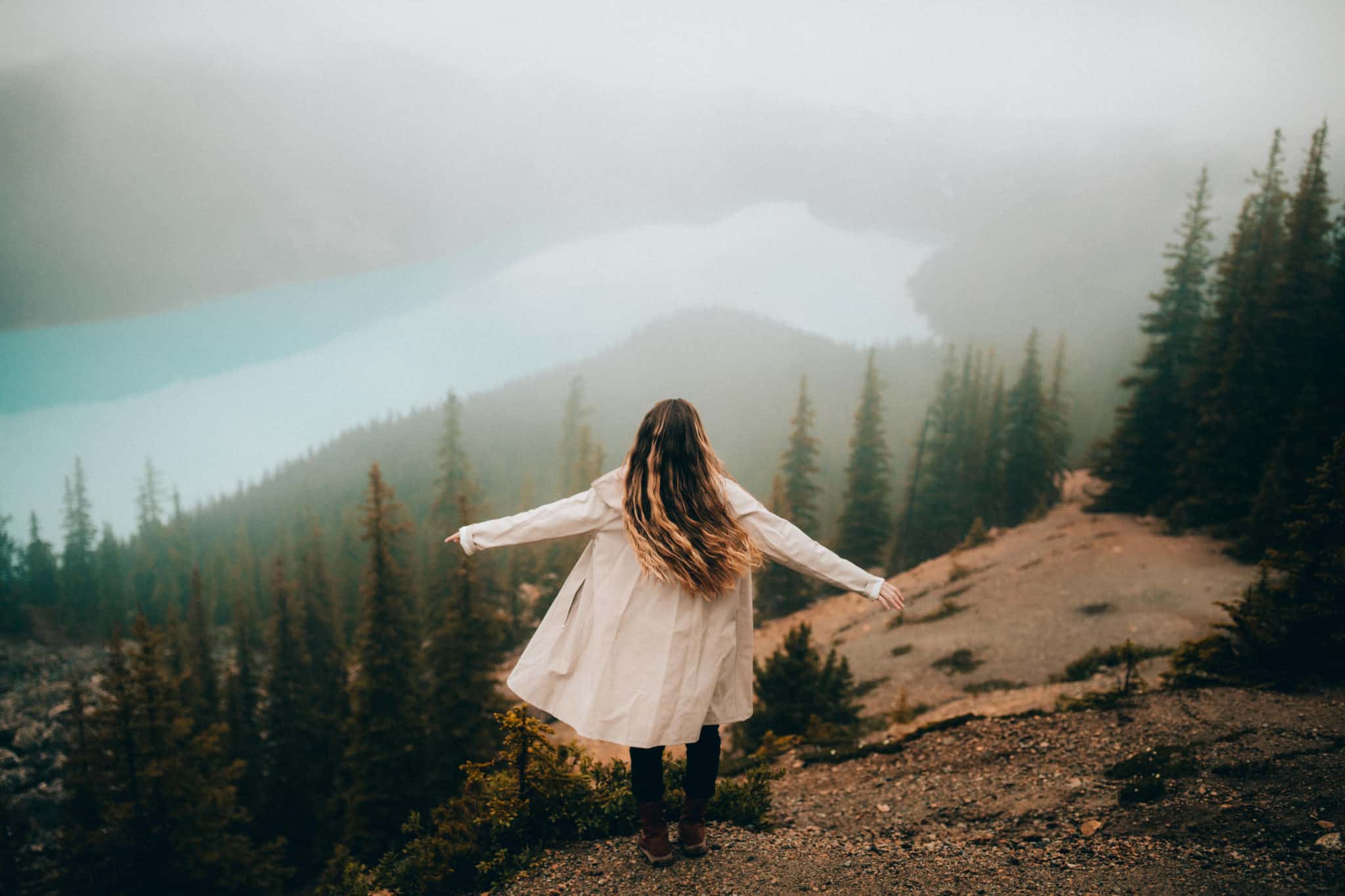
Vermillion Lakes
Vermillion Lakes is also among the most popular photo spots in Banff National Park for several reasons.
First, the convenience of the lake means it’s accessible to many people – just a few minutes’ drive outside of the town of Banff.
The lake also provides amazing reflections of the nearby Mount Rundle, making it a popular place for photos during sunrise with the glassy smooth waters. It’s also an incredible place for water sports, including taking a canoe out for a relaxing afternoon.
Looking to rent a kayak or canoe to enjoy the lake? Check out the Banff Canoe Club in town to pick up a rental by the hour. A short paddle through the connecting creek will give you access to the clear blue lake and stunning views of Mount Rundle.
How To Get Here: Located just off of Highway 1 in the Banff Town Exit, take Vermillion Lakes Road and park at the parking lot overlooking the lakes.
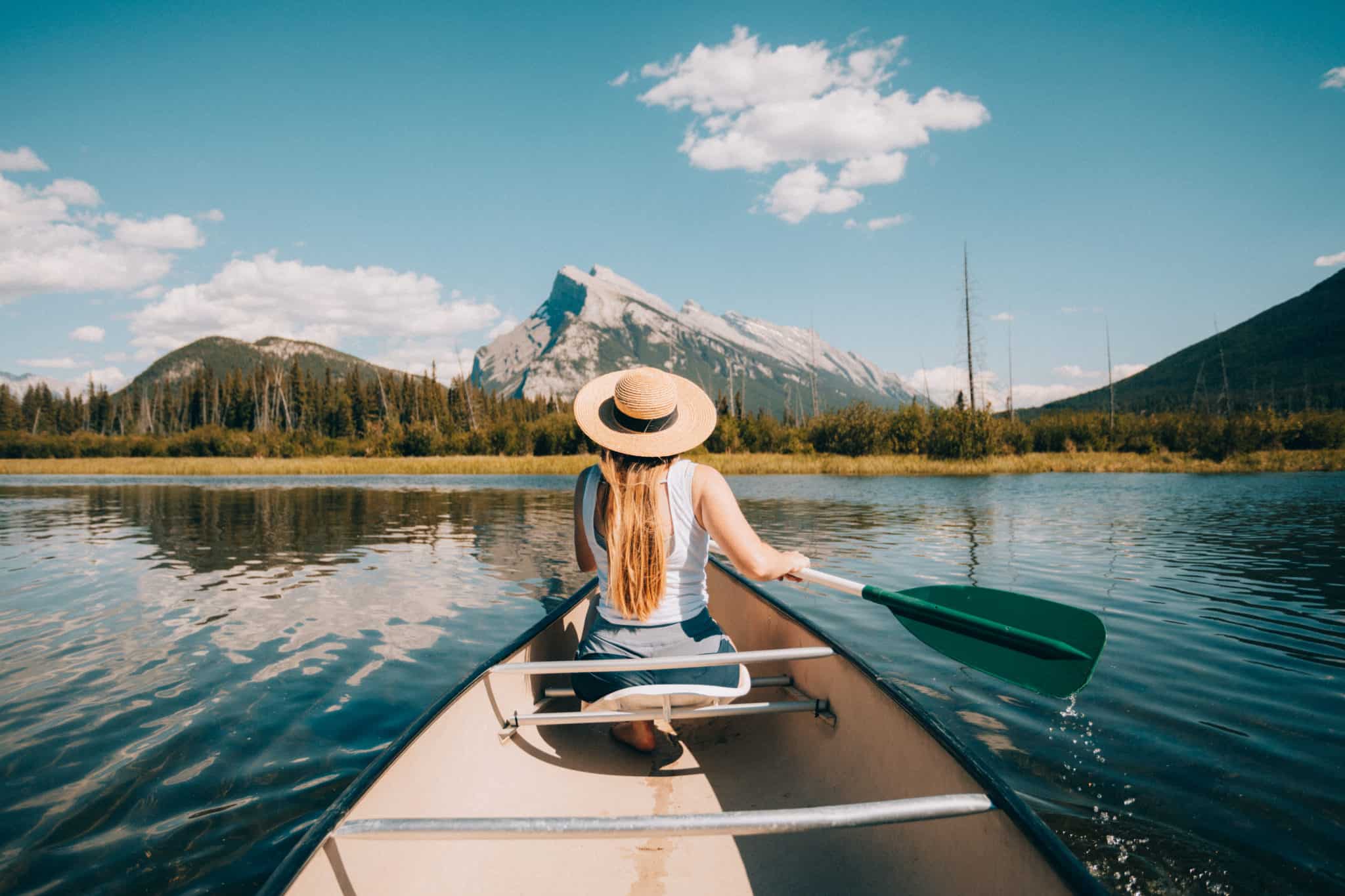
Banff Gondola
At the top of the Banff Gondola lies one of our favorite Banff photography locations of all time!
Sitting atop Sulphur Mountain, you can 360-degree views of the surrounding mountains for some incredible scenery. We especially love the views from the Rooftop Observation deck during dusk – we were able to catch the alpenglow on Tunnel Mountain as the town of Banff lit up below!
You can also wander the series of boardwalks for different perspectives or head inside and warm up with warm hot cocoa.
Wondering if this Banff photo spot is worth the hefty entry price? Rest assured there is plenty more to do at the top of Sulphur Mountain than just snapping a quick photo. From a mini-theater, restaurants, interactive museums, and gorgeous boardwalks, you can easily spend an entire day exploring here!
How To Get Here: The Banff Gondola is located just off of Mountain Avenue, south of the town of Banff up to the same parking lot as the Banff Upper Hot Springs. It’s a quick 10-minute drive from downtown, and if you don’t have a car, the bus circuit runs this route!
Read More: Everything You Need To Know About The Banff Gondola (Best Sunset Spot In Banff!)

Emerald Lake Lodge
Emerald Lake Lodge is a popular photography spot in Banff because of its gorgeous log cabin building perched on the edge of the lake. This is a luxury spot to stay overnight, but non-guests (Day visitors) can come and photograph the lodge across the water from sunrise to sunset.
The Emerald Lake Lodge is popular for long-exposure reflections in the winter, and canoeing photos in the summertime. There is a little area before crossing the bridge into the resort complex where photographers will often set up their tripods to capture the scene.
How To Get Here: Emerald Lake Lodge is actually located in the Yoho National Park, directly next to Banff National Park. From Banff, Drive on Highway 1 towards Golden, BC and turn off on Emerald Lake Rd once you reach Field, BC

Two Jack Lake
Equally a beautiful photo spots in Banff in the summer as in the winter, Two Jack Lake perfectly frames Mount Rundle in the distance for some truly amazing shots of the Canadian Rockies.
Catch the sunrise for those alpenglow moments, or come during the day for full-sun views like this one pictured below. You can walk to the small island to photograph the mountain with little bit of symmetry, or stay back along the shore to get the island in your Banff photography.
How To Get Here: Go north from the town of Banff on Lake Minnewanka Scenic Drive. After passing the Two Jack Campgrounds (Lakeside and Main), look for a small parking lot on your right. From here, walk down to the shore and find the perfect perspective of Two Jack Lake!

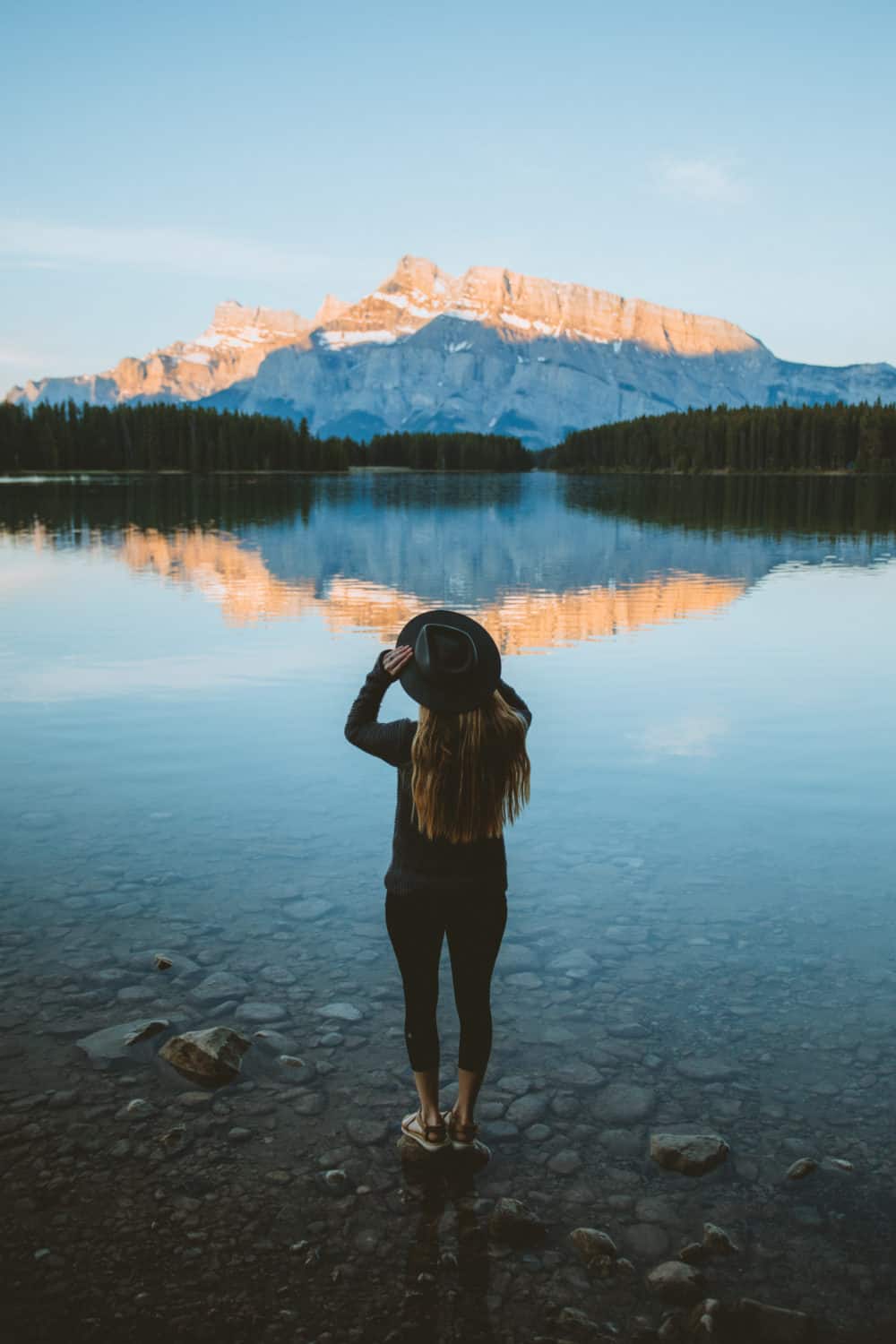
Lake Minnewanka
Lake Minnewanka is the largest lake in Banff National Park. In the summertime, you can catch tour boats leaving the dock, or even take a trip yourself to photography the lake from a new perspective.
In the wintertime, the lake freezes over and you can walk out towards the middle. The huge mountains surrounding Lake Minnewanka make for Banff photography images with lots of scale, we recommend playing around with a 100-400mm lens to capture the true size of the mountain range!
How To Get Here: Travel north from the town of Banff on Lake Minnewanka Scenic Drive until you reach the Lake Minnewanka Parking List. Walk towards the boathouse dock for lake access in the winter season.


Castle Mountain
Castle Mountain is halfway between Banff and Lake Louise and is the perfect location to capture this beautiful Banff scene during sunrise.
Enter the riverbank by a wildlife gate just before crossing the iron bridge. You’ll likely find other photographers here, setting up their shot on tripods to get that optimal light and sharp image quality!
How To Get Here: Take the Castle Junction Exit, turn north on the Banff-Windermere Hwy for just 250 meters and then park and pull ALL THE WAY off the road just before the bridge crossing. To the left of the road, enter the river’s edge through a wildlife gate (remember to shut it behind you) and enjoy unobstructed views of Castle Mountain!
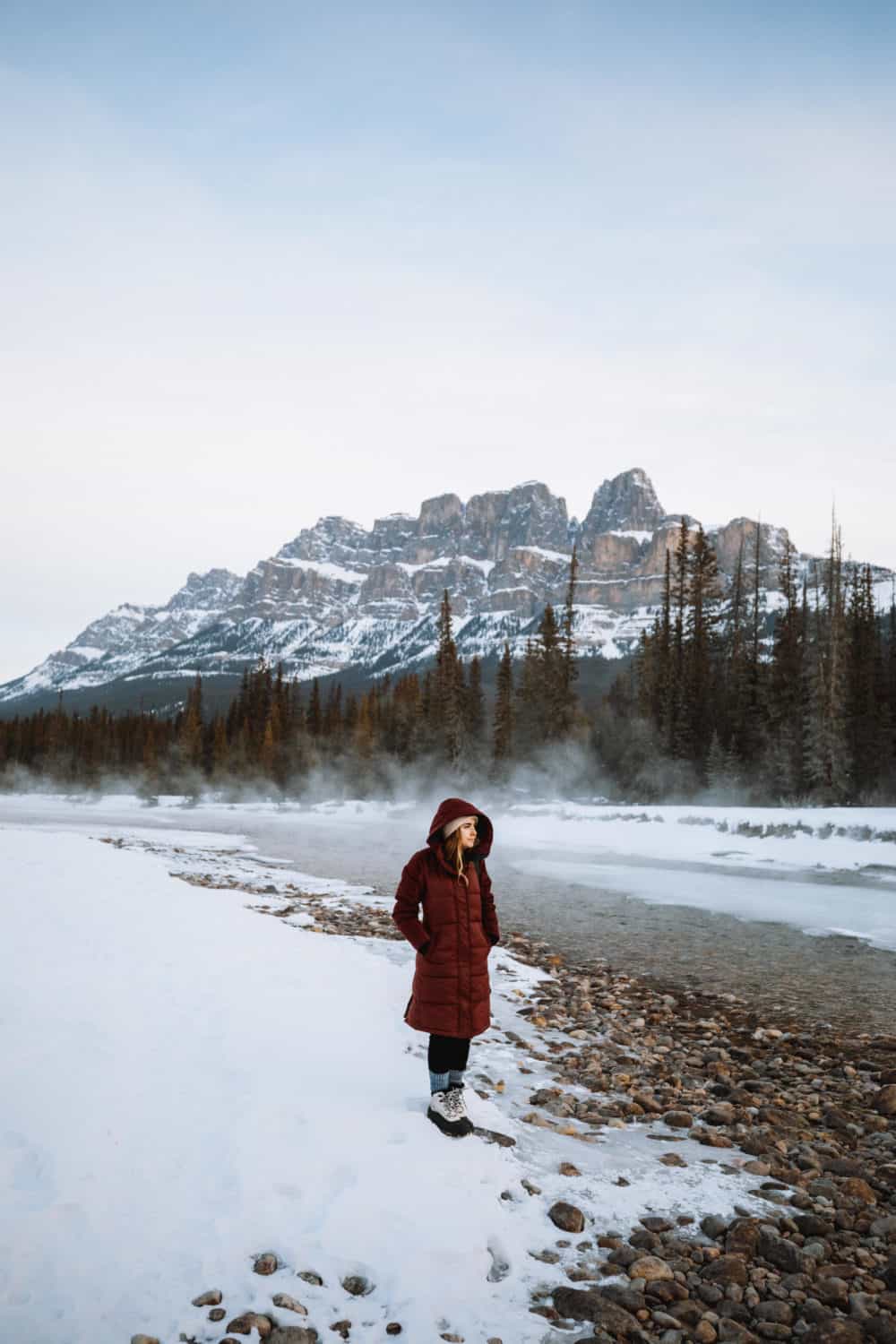
Morant’s Curve
Morant’s Curve is very likely one the most elusive photos spot in Banff (besides photographing wildlife, of course!). We say that because only the lucky get to catch an iconic red train curving around the river bend, and the others simply wait for hours with no luck.
On our last winter trip to Banff, we unfortunately didn’t spot a train on the tracks, though we heard you can look up the train schedule to estimate its arrival. However, that doesn’t take away from the natural beauty of this Banff photography locations.
How To Get Here: Take the Lake Louise exit off of Highway 1, but turn right, away from the lake. Follow Highway 1A south for 4.6 kilometers (a 5-minute drive), and turn into a parking lot located on your left. Cross the road, and set up your camera along the railing and cross your fingers for a passing trail!

Helicopter Ride (Alpine Heli)
Alpine Helicopters offer scenic sightseeing tours around the Canadian Rockies. From 12, 15, and 30-minute tours, you can choose to go are far as you want into the mountains for new perspectives. You’ll review your route with the pilot before takeoff, and discuss which mountains you’d like to see along the way.
Some of the most common sightseeing tours include the Three Sister Mountain Range, The Goat Mountain Range, Spray Lakes, and possibly an up-close-and-personal look at the majestic Mount Assiniboine.
How To Get Here: Apline Helicopters Inc. is actually located in Canmore, Alberta, just 20 minutes east of the town of Banff.

Abraham Lake Methane Bubbles
Likely one of the most iconic winter Banff photography locations is the Abraham Lake Methane bubbles. This phenomenon happens when organisms in the lake bed break down and produce methane, but the bubbles get trapped and frozen in the layers of ice beneath the surface!
If you are determined to grab photos of the methane bubbles, we highly recommend visiting on the early side of the winter season. This is because you’ll want to see it when the lake is frozen, but it hasn’t been covered yet by layers of snow.
We would even suggest coming with a small broom to brush off any snow/debris that may have collected on teh lake bed, so get a clearer photograph of the bubbles!
WARNING: Know the risks of walking on ice before you venture out. Frozen lake beds can be dangerous and it’s essential to know the integrity of the ice before getting on the ice.
How To Get Here: From Lake Louise, continue North on Highway 93 (Icefields Parkway) and from there turn East onto Highway 11. Park in one of several pullouts along the side of the lake (there is no dedicated parking lot), and carefully make your way on to a safe patch of ice. The most common place to park and enter the frozen lake is at Preacher’s Point.

FINAL THOUGHTS ABOUT BANFF PHOTOGRAPHY LOCATIONS
There are so many amazing photo spots in Banff National Park, and for good reason too.
The Canadian Rockies provide some of the most unique and beautiful landscapes in North America.
Berty and I are excited to return time and time again to add to this list and share more incredible locations with you in the future!
In the meantime, explore our google map below with specific location details on where to find some beautiful spots for your next photography tour in Banff!
Map of Photography Spots In Banff National Park
What are some of your favorite photo spots in Banff National Park? We’d love to hear in the comments below!
READ MORE CANADA POSTS
20 Adventurous Things To Do In Banff National Park
10 Easy Hikes In Jasper National Park
8 Amazing Photo Spots In Jasper National Park
Travel Photography Tips to Enhance Your Images
Plan Your Trip To Capilano Bridge Suspension Park
The Ultimate Weekend Itinerary For Vancouver, BC
Want more ideas for photo spots in Banff National Park? Follow our Canada board on Pinterest for more inspiration!

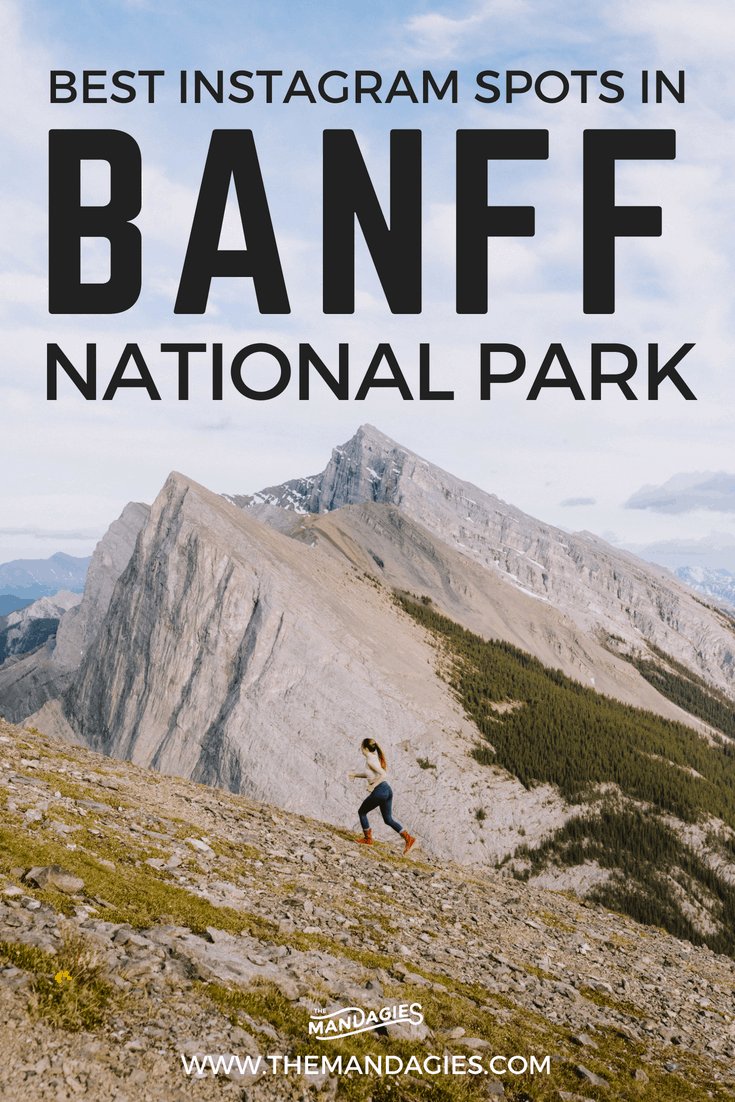



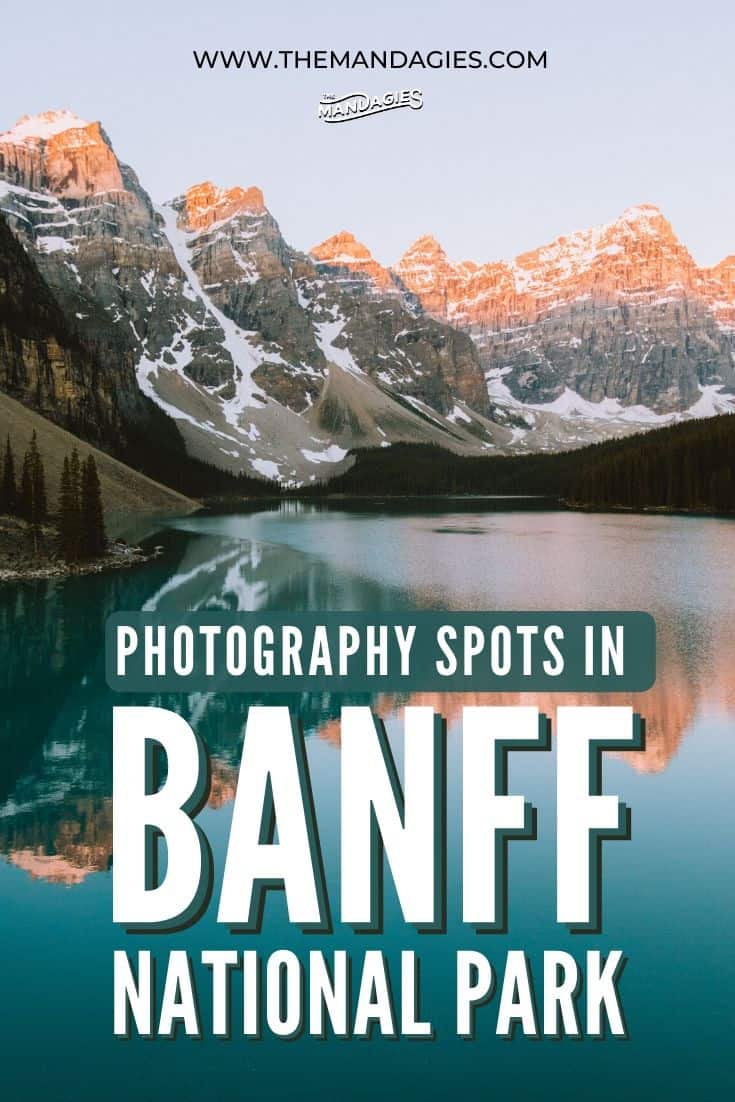

Thanks for breaking all of these photo spots down into a post! I haven’t been to Banff yet but it’s the next place I’m heading in Canada for sureee.